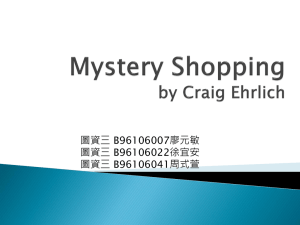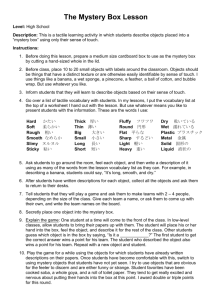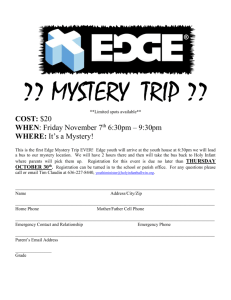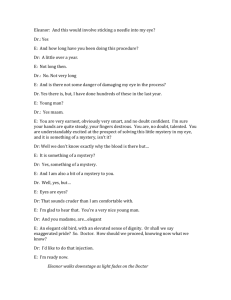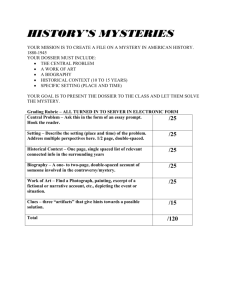A Case for Mystery Shopping
advertisement
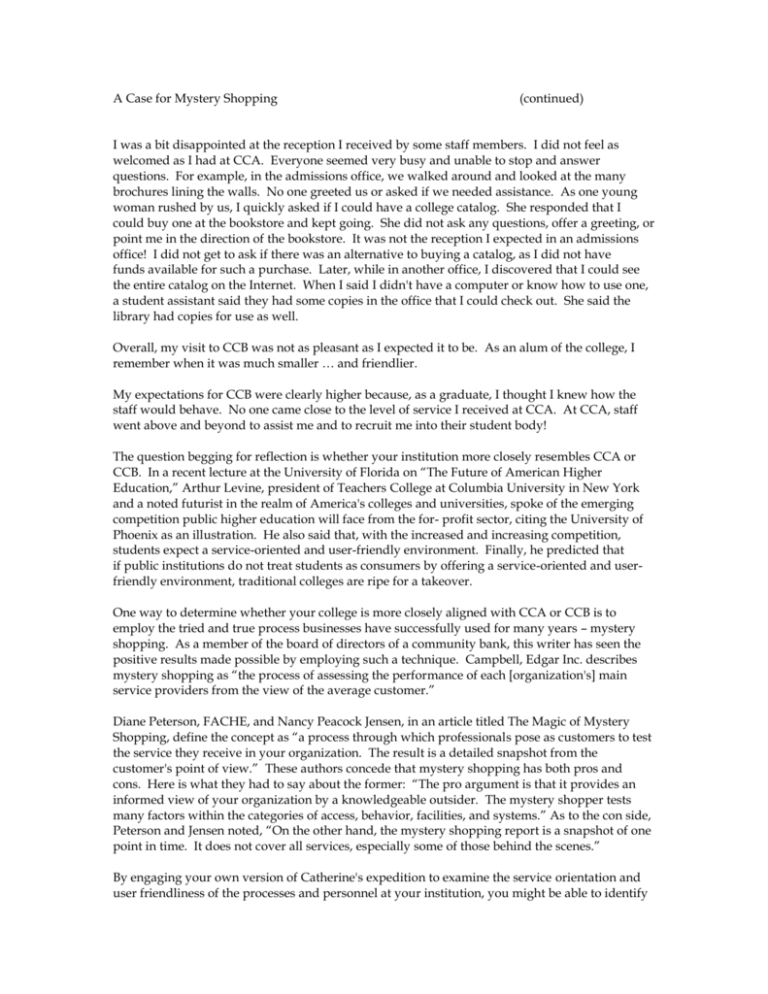
A Case for Mystery Shopping (continued) I was a bit disappointed at the reception I received by some staff members. I did not feel as welcomed as I had at CCA. Everyone seemed very busy and unable to stop and answer questions. For example, in the admissions office, we walked around and looked at the many brochures lining the walls. No one greeted us or asked if we needed assistance. As one young woman rushed by us, I quickly asked if I could have a college catalog. She responded that I could buy one at the bookstore and kept going. She did not ask any questions, offer a greeting, or point me in the direction of the bookstore. It was not the reception I expected in an admissions office! I did not get to ask if there was an alternative to buying a catalog, as I did not have funds available for such a purchase. Later, while in another office, I discovered that I could see the entire catalog on the Internet. When I said I didn't have a computer or know how to use one, a student assistant said they had some copies in the office that I could check out. She said the library had copies for use as well. Overall, my visit to CCB was not as pleasant as I expected it to be. As an alum of the college, I remember when it was much smaller … and friendlier. My expectations for CCB were clearly higher because, as a graduate, I thought I knew how the staff would behave. No one came close to the level of service I received at CCA. At CCA, staff went above and beyond to assist me and to recruit me into their student body! The question begging for reflection is whether your institution more closely resembles CCA or CCB. In a recent lecture at the University of Florida on “The Future of American Higher Education,” Arthur Levine, president of Teachers College at Columbia University in New York and a noted futurist in the realm of America's colleges and universities, spoke of the emerging competition public higher education will face from the for- profit sector, citing the University of Phoenix as an illustration. He also said that, with the increased and increasing competition, students expect a service-oriented and user-friendly environment. Finally, he predicted that if public institutions do not treat students as consumers by offering a service-oriented and userfriendly environment, traditional colleges are ripe for a takeover. One way to determine whether your college is more closely aligned with CCA or CCB is to employ the tried and true process businesses have successfully used for many years – mystery shopping. As a member of the board of directors of a community bank, this writer has seen the positive results made possible by employing such a technique. Campbell, Edgar Inc. describes mystery shopping as “the process of assessing the performance of each [organization's] main service providers from the view of the average customer.” Diane Peterson, FACHE, and Nancy Peacock Jensen, in an article titled The Magic of Mystery Shopping, define the concept as “a process through which professionals pose as customers to test the service they receive in your organization. The result is a detailed snapshot from the customer's point of view.” These authors concede that mystery shopping has both pros and cons. Here is what they had to say about the former: “The pro argument is that it provides an informed view of your organization by a knowledgeable outsider. The mystery shopper tests many factors within the categories of access, behavior, facilities, and systems.” As to the con side, Peterson and Jensen noted, “On the other hand, the mystery shopping report is a snapshot of one point in time. It does not cover all services, especially some of those behind the scenes.” By engaging your own version of Catherine's expedition to examine the service orientation and user friendliness of the processes and personnel at your institution, you might be able to identify and resolve problem areas, making your campus environment much more appealing and enticing. Had Catherine actually been engaged as a mystery shopper and filed a report concerning her visit to CCB, that institution would likely have attempted to address several areas resulting from her mystery shopping experience. Among them could have been looking at providing additional in-close parking for visitors, and especially those with small children; focusing on employee attitude and customer service in that one office; and making college catalogs more readily available. While a Google search will provide you with an array of firms who provide such mystery shopping services, it is not necessary to engage in a huge expense to determine the level of customer service afforded potential students at your institution. However, it is important that the mystery shopper be given specific directions and questions to pose during the inquiry. Peterson and Jensen indicated that the basic steps in mystery shopping are to (1) set objectives (what to measure and how results will be used); (2) choose the type (telephone caller or in-person visitor); (3) make arrangements (be a good observer, be demanding, be bias-free, and be a good actor); and (4) then shop (the shopper needs direction to the areas to shop and must record observations as often as possible). It is suggested that such an anonymous review be done periodically rather than on a single occasion. The key is to use the results to make any necessary changes, so that your current and future students feel that your college is much more like CCA than CCB. Larry W. Tyree mailto:lwt@coe.ufl.edu is a professor in the College of Education and Director of the Institute of Higher Education at the University of Florida. He is Executive Director of the National Alliance of Community and Technical Colleges, and is a Senior League Fellow .
